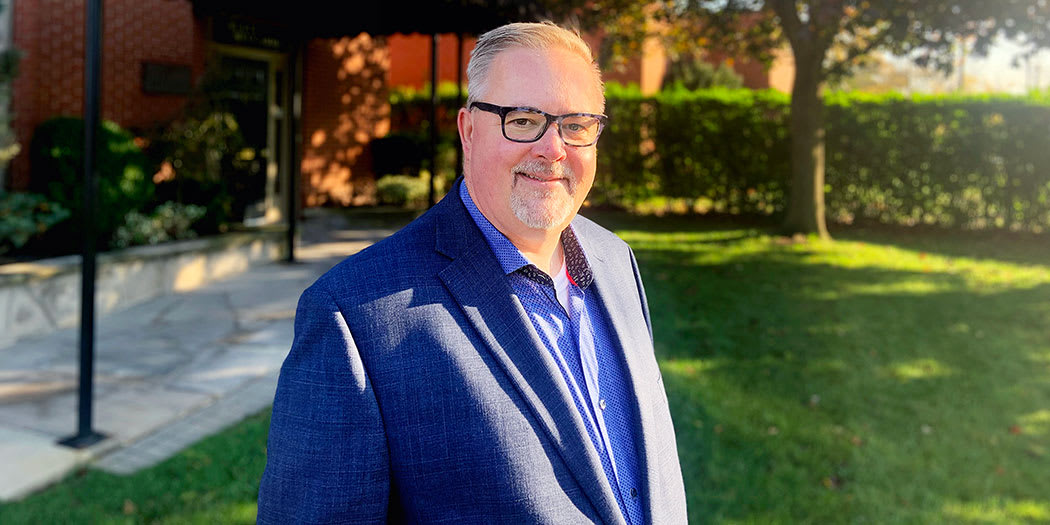Niagara District Stroke Centre is a regional service at the Niagara Falls Site. It offers several programs for both acute stroke and transient ischemic attack (TIA).
The Niagara District Stroke Centre works with a number of provincial partners to ensure the care in Niagara meets best practice standards. “Pre-hospital and Emergency Department treatment, diagnostic testing, inpatient care, rehabilitation and follow-up counselling form a care continuum and need to be fully integrated so patients will have the best outcome possible,” says Niagara District Stroke Centre Co-ordinator Leanne Hammond.
Niagara District Stroke Centre works closely with Base Hospital, which implements the provincial paramedic prompt card, ensuring all Niagara residents are assessed and directed to the appropriate centre. Stroke protocols have been put in place, so that all 911 calls resulting in suspected stroke patients come by ambulance to the Niagara Falls Site if they meet the criteria for tPA - a clot busting drug for stroke. Part of the protocol involves notifying the Emergency Department in advance, so the dedicated stroke team is gathered when the ambulance arrives with the patient.
Stroke signs and symptoms:
CALL 911 if more than one of these symptoms occur at the same time.
Weakness – Sudden loss of strength or sudden numbness in the face, arm or leg, even if temporary.
Trouble Speaking – Sudden difficulty speaking or understanding or sudden confusion, even if temporary.
Vision Problems – Sudden trouble with vision, even if temporary.
Headache – Sudden severe and unusual headache.
Dizziness – Sudden loss of balance, especially with any of the above signs.
The Emergency Department (ED) Stroke Team
“We have an excellent ED Stroke Team at our Niagara Falls Site. The neurologists, emergency physicians, nurse stroke specialists and acute stroke nurse practitioner work together to deliver the best stroke care as quickly and efficiently as possible," says Hammond. “Leading this team is our Stroke Program Medical Director, Dr. Don Chew, a Niagara Falls Neurologist who has been a strong advocate for best practice stroke care, and Acute Stroke Nurse Practitioner Marie Rusnak.”
The sooner a patient gets to the Niagara Falls Site ED, the more likely they will be able to receive tPA, the clot-busting drug that can drastically improve a stroke patient’s outcome. “There is a limited amount of time – three to four hours – from the onset of symptoms when we can use tPA, so as soon as stroke symptoms present, it is vital to call 911 immediately,” Leanne says.
Regional Acute Stroke Unit
If a patient has suffered an acute stroke, the Regional Acute Stroke Unit at the Niagara Falls Site may be where they begin rehabilitation. For the first time in Niagara, acute stroke patients are clustered so that the healthcare team can better co-ordinate care. “Speech therapy, occupational therapy, physiotherapy and specialized nursing care are important in the first few days following a stroke,” says Hammond. "Early treatment leads to better outcomes."
After discharge home or transfer to Hotel Dieu Shaver Health and Rehabilitation Centre for rehab services and various community programs are accessible to patients.
Niagara Stroke Prevention Clinic
One program is the Secondary Stroke Prevention Clinic for patients who have had a transient ischemic attack (TIA). “A TIA can be a precursor to an impending acute stroke so we must address risk factors as quickly as possible,” says Hammond. “The most effective treatment is prevention and our mission with this clinic is to provide rapid access to assessment, diagnostic testing and treatment for clients identified as high risk for stroke.”
Referrals to the Stroke Prevention Clinic can be made by a family physician, walk-in clinic physician or an emergency physician. A primary goal is to fast track testing (CT scan and Doppler test within 48 hours) and an initial consultation with a Neurologist/Physiatrist. At the same time, evaluations are made to determine the degree of risk for future stroke, consultations are booked with a Nurse Practitioner and Dietitian and health teaching gets underway.
For more information please contact – 905-378-4647, ext. 55556.
The Canadian Stroke Network and the Ontario Stroke Network have a number of publications listed on their website. Take a moment and visit them:
http://canadianstrokenetwork.ca
https://ontariostrokenetwork.ca
Stroke patient grateful for the timely care he received
Ross Macfarlane shares his story to thank the healthcare team and to encourage others to seek immediate medical help whey they experience symptoms of stroke. Read his story.
Every 10 minutes in Canada, someone has a stroke.
A stroke occurs when a blood clot blocks blood flow to the brain. This loss of blood flow can cause varying levels of disability, up to and including death.
Patients with vascular disease may experience a mini-stroke or transient ischemic attack (TIA), which resolves within 24 hours, or an acute stroke, which results in more lasting deficits.
Extraordinary Caring. Every Person. Every Time.


